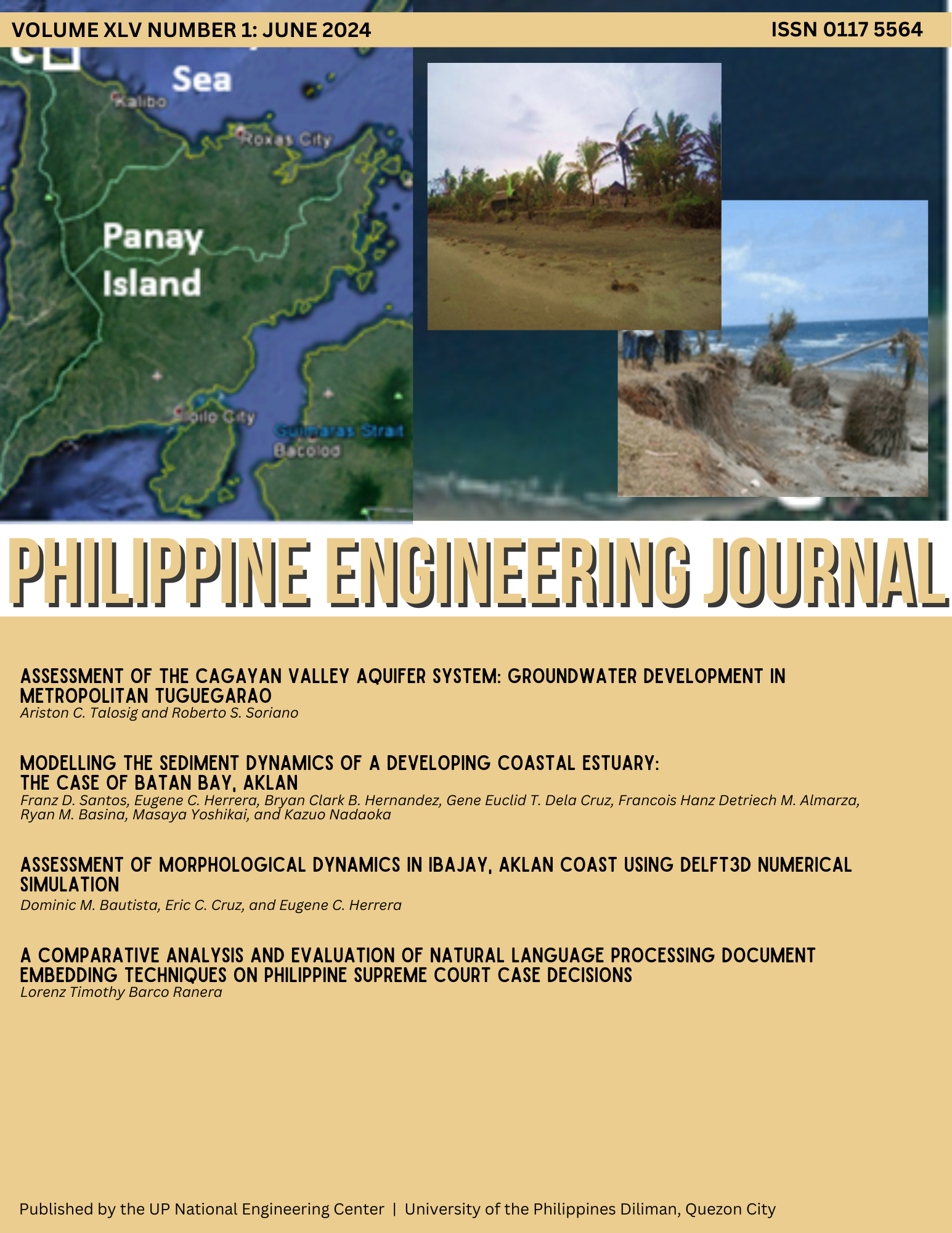Assessment of the Cagayan Valley Aquifer System: Groundwater Development in Metropolitan Tuguegarao
Abstract
Metropolitan Tuguegarao Water District is one of Northern Luzon's leading groundwater consumers, averaging a monthly extraction of 1.43 million cubic meters. Since its inception, the water supply system has relied mainly on groundwater, triggering well sources to deteriorate. While recharge through soil moisture accounting is sufficient for safe yield estimation, a groundwater flow model was created to account for the spatiotemporal distribution of groundwater levels in response to hydraulic and hydrologic stresses. MODFLOW, a finite-difference model, aided in the development of local grids from a regional basin—the Cagayan Valley Aquifer System. A three-dimensional numerical flow model was satisfactorily calibrated, with the goodness of fit between the simulated and observed heads determined through three statistical indices: Mean Absolute Error (0.5376 m), Root-Mean-Squared Error (0.8061 m), and Normalized Root-Mean-Squared Error (2.23%). The model simulated a 10.60% recharge from rainfall for the regional basin, which is comparable to the average recharge rate estimated by the Department of Environment and Natural Resources. Continuous pumping demonstrated head reductions that exceeded critical levels in four wells at current rates, 12 wells at adjusted rates, and five wells affected by pumping the proposed wells. Notably, four production wells, which constitute 31% of the present groundwater production, remained below critical levels. With the proposed surface water facility, however, groundwater production may be reduced up to 63%, allowing for the resource to recover. The findings of this research on all model scenarios showed that groundwater levels will decrease in the coming years. Thus, efficient planning for sustainable resource use is crucial. This study presents the relevance of numerical hydraulic analysis for a more comprehensive groundwater resource assessment.


